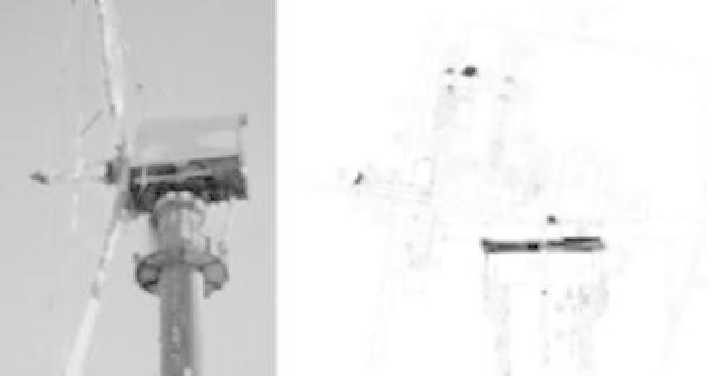Environmental Engineering Reference
In-Depth Information
manufacturers, using fibreglass blades and computer technology,
are able to make windmills with the same output per annum, as
Juul demonstrated in the 1950s.
With the Bogø wind turbine, the technical breakthrough was a
fact. Johannes Juul had created a concept, which later became the
new industrial standard for wind energy. It was logical and
comparatively simple to scale up the Bogø windmill to the
200 kW of the Gedser wind turbine, erected in 1957. It operated
for the following 10 years and was too a success. In other parts
of the world various types of wind turbines were developed and
tested, but none of these were based on a concept that would
later have any commercial relevance.
Figure 7.4
Nacelle of the 1957 Gedser 200 kW windmill, upscaled
version of the Bogø windmill (left); Section (right).
The Bogø windmill was, technically speaking, of a more elegant
design than the 1957 Gedser wind turbine, which for economical
reasons got a chain drive transmission, whereas the Bogø windmill,
although built at a time of war and scarcity, had an advanced FLS
gearbox of the so-called integrated type: a compact unit, low noise
and of the same high mechanical quality as the gearboxes that FLS
manufactured in big number for their cement factory machinery.
In fact, the rather primitive chain drive was the weak point of
the Gedser windmill. The chain enclosure was not 100% tight, which
caused lubrication oil film on the surrounding crops. That did not
make wind energy popular among the neighbouring farmers.


Search WWH ::

Custom Search